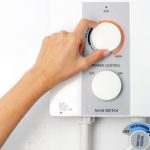What is the Best Time to Turn on the Heater?
November 27, 2023 6:00 pm Leave your thoughts As the temperature begins to drop and the days grow shorter, the inevitable question arises: when is the best time to turn on the heater? While the answer to this question may vary depending on your personal preferences and local climate, there are some general guidelines to consider. In this blog, we’ll explore the factors that influence the decision to fire up the heater, helping you strike a balance between comfort and energy efficiency.
As the temperature begins to drop and the days grow shorter, the inevitable question arises: when is the best time to turn on the heater? While the answer to this question may vary depending on your personal preferences and local climate, there are some general guidelines to consider. In this blog, we’ll explore the factors that influence the decision to fire up the heater, helping you strike a balance between comfort and energy efficiency.
1. Outdoor Temperature
The outdoor temperature is perhaps the most straightforward factor to consider when deciding when to turn on the heater. It’s essential to keep an eye on the weather forecast and monitor the temperature outside. While there is no specific temperature threshold that universally dictates when you should use your heater, a good rule of thumb is to wait until it gets uncomfortably chilly indoors.
2. Indoor Comfort
Your own comfort is a crucial consideration. If you find yourself shivering or needing to layer up with blankets indoors, it’s probably time to turn on the heater. However, remember that what’s comfortable for one person may not be the same for another. Some individuals are more cold-tolerant than others, so use your judgment to determine when you feel it’s necessary to start heating your home.
3. Energy Costs and Efficiency
Balancing comfort with energy costs is a significant concern for many homeowners. Heating your home can be a substantial part of your energy bill, so using the heater sparingly can help save money. To maximize energy efficiency, it’s advisable to delay turning on the heater until you really need it. Dressing warmly, using blankets, and sealing any drafts in your home can help you delay its use.
4. Programmable Thermostats
If you have a programmable thermostat, it’s an excellent tool to manage when your heater runs. You can set a schedule that aligns with your daily routine, allowing the heater to turn on and off at specific times. This way, you can ensure your home is warm and comfortable when you need it and save energy when you’re not at home or while you sleep.
5. Zoning Systems
Zoning systems divide your home into different temperature zones, allowing you to heat specific areas only when needed. This can be an efficient way to manage your heating costs. For example, you can keep the living room warm while leaving bedrooms cooler during the night. Zoning systems are especially effective if you have a large home or areas that are rarely used.
6. Use Space Heaters
Consider using space heaters in the rooms you frequent the most, rather than heating your entire home. Space heaters are more energy-efficient for spot heating, allowing you to keep the rest of your house cooler. Just be sure to follow safety guidelines when using space heaters and never leave them unattended.
7. Dressing in Layers
Before reaching for the thermostat, consider adding an extra layer of clothing. Wearing warm clothing, like sweaters and socks, can help you stay comfortable without turning up the heat. By adjusting your clothing choices, you can delay the need to use your heater.
8. Seal Drafts and Insulate
Drafty windows and doors can let cold air infiltrate your home and warm air escape, making it harder to maintain a comfortable temperature. Insulating your home and sealing drafts can help you retain heat more effectively, reducing your reliance on the heater.
9. Monitor Indoor Humidity
Maintaining proper indoor humidity levels can also impact your perception of temperature. Dry air can feel cooler, while properly humidified air can feel warmer. Using a humidifier to add moisture to the air can help you feel more comfortable without raising the thermostat.
10. Be Mindful of Health Concerns
In some cases, turning on the heater may be necessary for health reasons. Extremely cold indoor temperatures can lead to health issues, especially for vulnerable populations like children and the elderly. Be mindful of the health and well-being of your household members and consider their comfort when deciding when to use the heater.
11. Prevent Frozen Pipes
If you live in an area prone to freezing temperatures, it’s essential to use your heater to prevent your pipes from freezing. Frozen pipes can lead to significant damage and costly repairs. Keep your home at a temperature that prevents freezing, even if it means using the heater earlier in the season.
Summary
The best time to turn on the heater is a personal decision influenced by several factors. It’s essential to strike a balance between comfort and energy efficiency, considering factors such as outdoor temperature, indoor comfort, energy costs, and the availability of energy-saving technologies like programmable thermostats and zoning systems. By being mindful of these factors and taking proactive steps to conserve heat, you can make informed decisions about when to use your heater and keep your home cozy without breaking the bank.
Need Heating and Cooling Services in Woodbine, KS?
Family- and locally owned and operated since 1996, we have built a reputation for delivering excellent workmanship, dependability, and professionalism to the residents and commercial businesses in the Woodbine and surrounding areas. Our team of highly skilled and knowledgeable technicians specializes in air conditioning and heating system installation, repair, and replacement; boiler and furnace maintenance; and mini-split and general HVAC system care. All of our technicians are fully licensed, bonded, and insured. Contact us today to learn more about what we can do for you!
Categorised in: Heating, Heating and Cooling
This post was written by Writer
